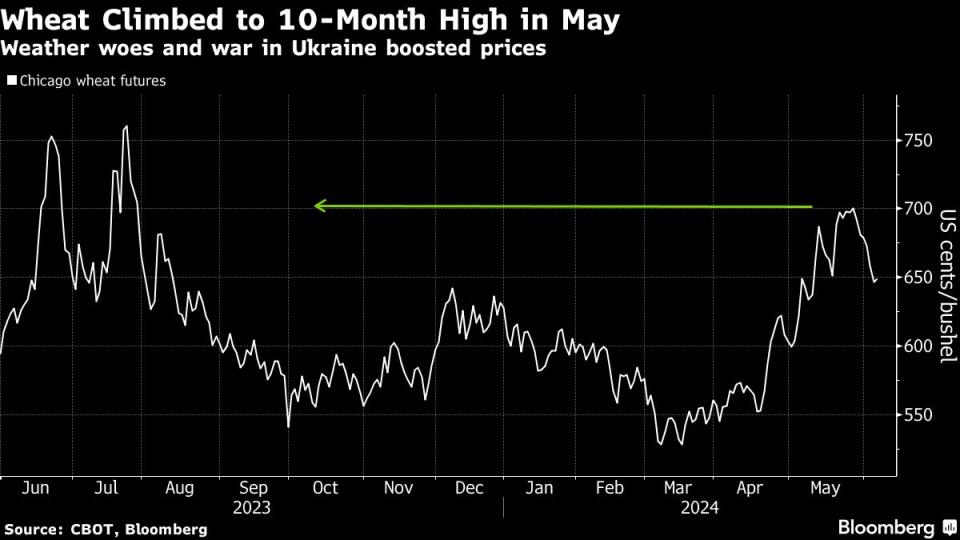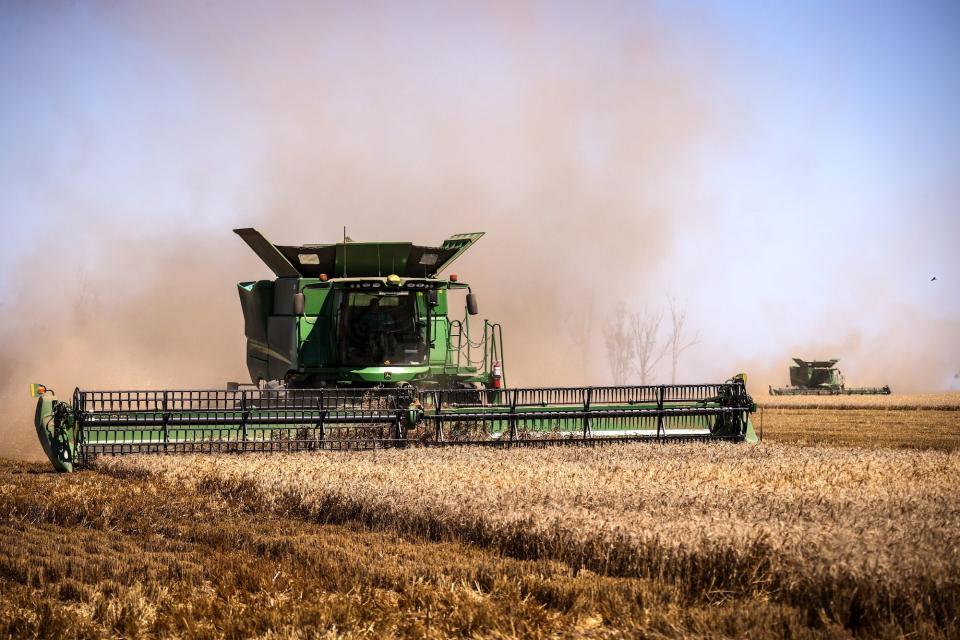Australia Wheat Exports Curbed as Dry Weather Parches Fields
(Bloomberg) -- Weather-hit wheat production in Western Australia, the top exporting state, and dwindling stockpiles will limit the amount of the staple the nation can export in the coming year, further straining global supplies.
Most Read from Bloomberg
Real Estate Investors Are Wiped Out in Bets Fueled by Wall Street Loans
Billionaire-Friendly Modi Humbled by Indians Who Make $4 a Day
Wheat exports are likely to be 20.8 million tons in 2024-25, only marginally above the previous season and a third less than shipments of 31.8 million tons in 2022-23, according to data from government crop forecaster ABARES. That comes at a time when the agency expects production to increase by 12%.
The constrained exports may bolster wheat prices, which climbed to the highest in 10 months in May as weather woes in major growing regions and the war in Ukraine, once Europe’s breadbasket, damped the supply outlook.
Weeks of dry weather delayed plantings and forced a late start to the season in Western Australia — producer of 40% of the nation’s wheat, of which more than 95% is exported mostly to Asia and the Middle East.
“If I sent you a picture of my crops now, you would ask what crops? It all looks brown because it was planted in dry soil,” said agronomist Michael Lamond, who lives on a farm on the western rim of the grain belt. “We’re just relieved there was enough rain over the weekend that they will germinate.”
Plantings are likely to be around the 10-year average, said Lamond, from the Grains Industry Association of Western Australia.
Residual inventories from three bumper crops in Australia have been exhausted, meaning there are no carryover supplies to bolster exports, as there were after the lackluster harvest in the previous year.
Depleted Stockpiles
“There were lots of stocks left over so it was possible to ship more than what was produced,” said Ole Houe, chief executive officer at IKON Commodities, referring to Western Australia. “There will be nothing left at the end of this year, so exports will be impacted even if the crop is the same.”
While low output from Western Australia could cap the country’s export capacity, a run of good rains leading up to planting in New South Wales and Queensland in the east buoyed expectations there, said Emily Dahl, an ABARES analyst.
Although production in Victoria state is expected to fall from last year, it will still be higher than the 10-year average, Dahl said.
And rains in Western Australia have time to boost crops before the harvest starts in November. The growing regions have a high chance of above average rainfall in the next three months, said the Bureau of Meteorology.
“The amount of rain Western Australia gets in the next few weeks will be very important to determine whether we can have an average to above-average crop in the state,” said Dennis Voznesenski, associate director of sustainable and agricultural economics at Commonwealth Bank of Australia.
(Updates to add analyst comment in last paragraph)
Most Read from Bloomberg Businessweek
Sam Altman Was Bending the World to His Will Long Before OpenAI
David Sacks Tried the 2024 Alternatives. Now He’s All-In on Trump
Legacy Airlines Are Thriving With Ultracheap Fares, Crushing Budget Carriers
©2024 Bloomberg L.P.

 Yahoo Finance
Yahoo Finance 

